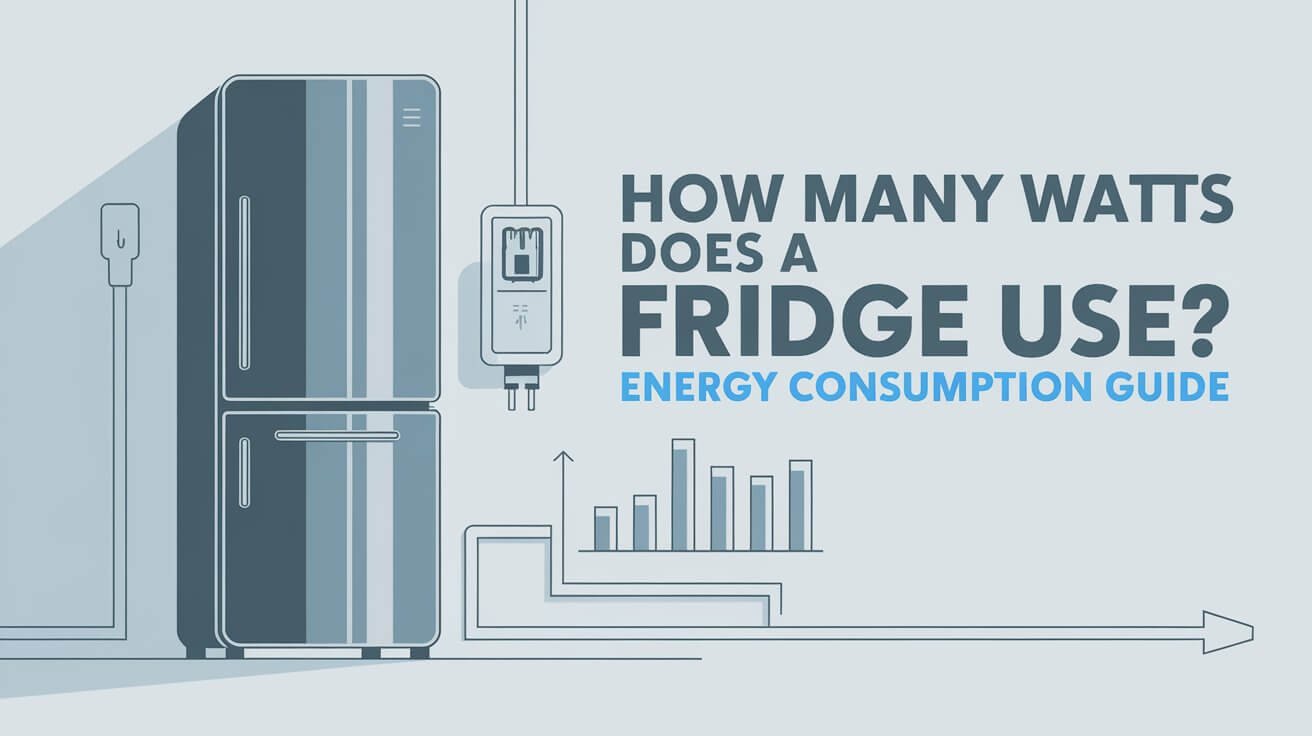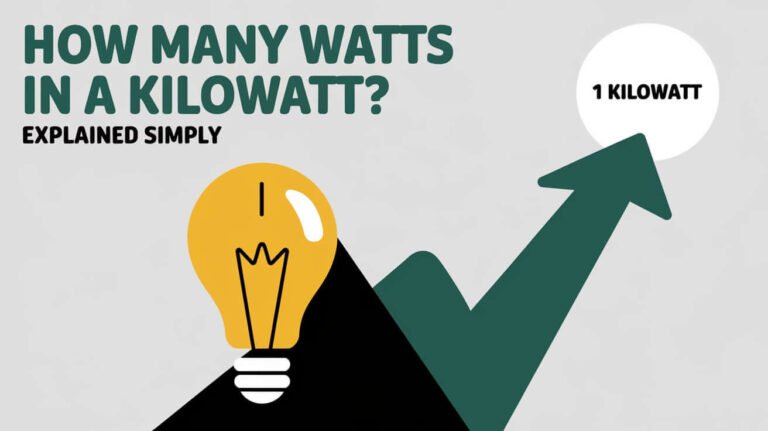
Understanding how much power a fridge uses is key to saving on energy bills in the U.S. Most home fridges use between 350-780 watts. This can really add up and affect your energy costs.
The power use of a fridge varies a lot. It depends on its age, size, and type. For example, fridges with ice dispensers and water filters use more power. This can increase your fridge’s energy usage.
Standard Refrigerator Power Requirements
It’s key to know how much power different refrigerators need. Mini fridges use much less power than big ones. They usually use between 50 and 100 watts, which is good for saving energy in small spaces.
Big refrigerators and side-by-side models use more power. A standard fridge might use 100-400 watts, depending on its size and age. Side-by-side fridges can use a lot of energy, with some models using more than others.
Refrigerator Wattage Comparison
- Mini fridges: 50-100 watts
- Full-size refrigerators: 100-400 watts
- Side-by-side fridges: 200-600 watts
Knowing how much power your fridge uses can help you save money and energy. Choosing an efficient model and watching your fridge’s power use can cut down your bills. It also helps the environment.
Daily Power Consumption Patterns
Refrigerators turn on and off all day, using about 1/3 of their listed wattage on average. This pattern is called refrigerator power cycles. It keeps the fridge’s temperature steady. So, a fridge actually uses less energy than its listed wattage.
To find out how much energy a fridge uses daily, divide its wattage by 3. For instance, a 500-watt fridge uses about 167 watts daily. This means it uses about 4 kWh of electricity each day. The cost can range from $0.50 to $1.00 a day, depending on your area’s electricity rate.
Several things can change how much energy a fridge uses:
- Refrigerator size and type: Bigger fridges use more energy than smaller ones.
- Temperature settings: Keeping the fridge colder uses more energy.
- Door opening frequency: Opening the door a lot can increase energy use.
Here’s a rough idea of a typical fridge’s daily energy use:
| Refrigerator Type | Daily Energy Use (kWh) | Estimated Daily Cost |
|---|---|---|
| Small fridge (100-200 watts) | 2-4 kWh | $0.25-$0.50 |
| Medium fridge (200-400 watts) | 4-6 kWh | $0.50-$1.00 |
| Large fridge (400-600 watts) | 6-8 kWh | $1.00-$1.50 |
Factors That Affect Refrigerator Wattage
Several factors can change how much energy a fridge uses. Knowing these can help you use less energy and save money. Things like the room temperature, how often you open the fridge, and what’s inside can all play a part.
Setting the fridge to a lower temperature uses more energy. Opening the fridge door a lot also makes it work harder. And, having more food in the fridge can help keep it cooler, which is good for energy use.
Temperature Settings Impact
How cold you set your fridge matters a lot. If it’s too cold, you’ll use more energy. But if it’s too warm, your food might not be safe. Finding the right temperature is key to saving energy and keeping your food safe.
Door Opening Frequency
Opening the fridge door a lot makes it use more energy. This is because it has to cool down again every time. Using door seals or trying to open the door less can help save energy.
Food Load Effects
How much food you have in the fridge affects its energy use. A full fridge stays cooler, which means it uses less energy. Knowing this can help you use your fridge more efficiently and save on your energy bill.
Energy Star Ratings and Power Usage
Choosing an Energy Star certified refrigerator is a smart move. These models use about 15% less energy than others. They offer the same performance but use less power.
Energy Star certified fridges are among the most efficient. They use less energy but perform like standard models. Choosing one can save around $160 over 12 years. Here are some benefits:
- They use less energy, which can lower your bills
- They perform as well as standard fridges but use less power
- They help reduce greenhouse gas emissions and support a sustainable environment
Many brands, like Frigidaire, LG, and Whirlpool, offer Energy Star certified fridges. They have a wide range of sizes, from mini-fridges to large side-by-sides. Buying one from these brands means you’re getting a quality, energy-saving appliance.
Peak vs. Standby Power Consumption
There are two main factors to consider when looking at refrigerator power use: peak and standby power. A fridge power surge happens when the compressor turns on, using a lot of power. Standby power is the small amount used when the fridge isn’t cooling.
Knowing the difference between peak and standby power helps you save energy and money. For instance, a typical fridge uses 350 to 780 watts, averaging about 167 watts.
Startup Power Surge Details
A fridge power surge can be big, with some using 2-3 times more power at start-up. This surge can last a few seconds to a few minutes, depending on the fridge’s type and age.
Running Wattage Metrics
Standby power, on the other hand, is much lower, from 5-10 watts. This small power use can add up, but it’s much less than the surge at start-up. By understanding these patterns, you can cut down on energy use and save on bills.
Some important stats to remember are:
- A typical fridge might use 2,400 to 6,000 watt-hours (or 2.4 to 6 kilowatt-hours) daily.
- Refrigerators usually make up about 7% of a home’s energy use.
- The yearly cost of running a fridge is roughly $150.
Seasonal Changes in Fridge Power Usage
As the seasons change, so does your fridge’s energy use. In summer, your fridge works harder to stay cool. This means it uses more power because it runs more often.
To keep your fridge efficient in summer, adjust its settings. It’s best to keep it at 37°F and the freezer at 0°F. Also, defrost the freezer when ice is about ¼ inch thick to save energy.
Here are some tips to cut down your fridge’s summer energy use:
- Check and replace the door seals to prevent cold air from escaping
- Keep the fridge and freezer well-stocked, as a full fridge retains cold more effectively
- Avoid placing the fridge in direct sunlight or near a heat source
Following these tips, you can lower your fridge’s energy use in summer. This helps it stay efficient all year round.
| Season | Average Fridge Temperature | Energy Consumption |
|---|---|---|
| Summer | 37°F (fridge), 0°F (freezer) | Higher due to warmer ambient temperature |
| Winter | 37°F (fridge), 0°F (freezer) | Lower due to cooler ambient temperature |
How Many Watts Does A Fridge Use Per Month
To figure out how much energy a fridge uses each month, we need to look at its daily use. Most fridges use between 350 to 780 watts. This means they use about 2.9 to 6.5 amps at 120 volts.
Breaking it down, a fridge uses around 100 to 250 watt-hours per hour. This depends on things like how often you open the door, the room temperature, and your fridge’s settings.
A typical fridge might use 2,400 to 6,000 watt-hours (2.4 to 6 kWh) every day. To find out the monthly use, we multiply the daily use by 30. This gives us an average of 72 to 180 kWh per month.
Here’s a simple breakdown of the estimated monthly fridge energy consumption:
| Refrigerator Type | Average Daily Energy Consumption (kWh) | Average Monthly Energy Consumption (kWh) |
|---|---|---|
| Small | 1.5 | 45 |
| Medium | 3.5 | 105 |
| Large | 5.5 | 165 |
Understanding how much energy your fridge consumes each month helps you manage your costs. It also helps you make smart choices about using your fridge.
Smart Features and Power Consumption
Smart fridges are getting more popular, thanks to cool features like touch screens and WiFi. But, these extras can make them use more energy. It’s important to know how these features affect power use.
Connected refrigerator efficiency is a big deal. Some smart fridges use sensors to save energy. Features like automatic door closing and smart defrosting also help cut down on waste.
When you’re looking for a smart fridge, check its energy efficiency. Brands like Samsung and LG have models that save energy. By picking a fridge with energy-saving features, you can enjoy smart tech without using too much power.
Here are some tips to cut down on smart fridge energy use:
- Choose a model with a high energy efficiency rating
- Adjust temperature and humidity levels to optimize energy consumption
- Use features like automatic door closing and smart defrosting to minimize energy waste
- Regularly clean and maintain your smart fridge to ensure optimal performance
Cost Analysis of Refrigerator Operation
Knowing how much a refrigerator costs to run is key to saving money at home. The yearly cost to run a fridge is about $200-$300. This amount changes based on the fridge model and local electricity prices.
The cost to run a fridge depends on its energy efficiency and how often it’s used. A modern fridge with the Energy Star label can save you up to $165 a year. Choosing an energy-efficient model and keeping it in good shape helps save money.
Here are some ways to cut down on fridge energy costs:
- Keep the fridge clean and set the temperature to 37°F for the fridge and 0°F for the freezer.
- Place the fridge in a cool spot, away from heat sources.
- Clean the coils on the fridge’s back every 3 months.
- Regularly check and maintain the rubber gaskets around the fridge and freezer doors.
Following these tips, you can lower your fridge’s energy costs. This helps you make smart choices about using your appliances and saves money in the long run.
Power-Saving Refrigerator Settings
Keeping your fridge at the right temperature is key for saving energy. If you lower the fridge’s temperature by 10°F, you can use up to 25% less energy. Adjusting the temperature and using features like vacation mode are important for saving power.
Here are some tips for energy-saving fridge settings: * Keep the fridge between 37°F and 40°F. * Set the freezer to 0°F to 5°F. * Use energy-saving or vacation mode when not in use. * Clean the coils regularly for better cooling.
Following these tips, you can cut down your fridge’s power use. This doesn’t mean you’ll have to sacrifice food safety or convenience. Always check your fridge’s manual for model-specific power-saving tips.
| Refrigerator Model | Energy-Efficient Feature | Power Savings |
|---|---|---|
| TCL P503SB | Twin Eco Inverter technology | Up to 24-hour energy savings |
| TCL P470CD | Twin Eco Inverter technology | Up to 24-hour energy savings |
Solar Power Compatibility for Fridges
Using solar energy to power refrigerators involves several key factors. Solar fridges are ideal for those seeking off-grid solutions. You must assess your fridge’s size, energy use, and your area’s sunlight.
A standard solar panel makes about 300 watts. For a regular fridge, you’ll need three to four panels. The exact number depends on your fridge’s energy needs and sunlight.
Battery Requirements
For off-grid use, a solar battery is essential. It stores extra electricity for later. The battery’s size depends on your system’s capacity and your fridge’s energy use.
Panel Specifications
The panel’s specs are also important. For example, EcoFlow’s 400W Portable Solar Panel can make 1.6 to 2.4 kWh daily. This is with 4-5 hours of peak sunlight.
Here’s a quick rundown of what to consider for solar fridges:
- Size and energy efficiency of the refrigerator
- Amount of sunlight available
- Number and type of solar panels required
- Capacity of the solar battery
Looking at these points and picking the right solar fridges, you can use green energy. This keeps your food fresh and cool.
In Conclusion
As we wrap up our deep dive into fridge power use, the main point is clear: using energy-saving tips can cut down your fridge’s power use and lower your bills. Knowing how to use your fridge wisely and manage its energy can help you save money and help the planet.
If you’re looking for a new fridge or want to get more out of your current one, this article has you covered. By using the tips from this article, you can choose options that are good for your wallet and the environment. Even small changes, like keeping the right temperature and not opening the door too much, can make a big difference.
Answered Queries
How many watts does a refrigerator use?
Refrigerators use different amounts of watts based on size, style, and energy efficiency. Knowing how much power your fridge uses is key to keeping your energy bills low.
What are the power requirements for different types of refrigerators?
Mini fridges, standard full-size models, and side-by-side refrigerators need different amounts of power. Knowing this helps you choose the right fridge for your needs.
How does a refrigerator’s power consumption vary throughout the day?
Refrigerators don’t run all the time. They cycle on and off to keep the right temperature. This cycling affects how much energy they use each day.
What factors influence a refrigerator’s power consumption?
Several things affect how much energy a fridge uses. These include temperature settings, how often you open the door, and how much food you store. Making smart choices in these areas can lower your fridge’s energy use.
How do Energy Star rated refrigerators compare in terms of power usage?
Energy Star certified fridges are more efficient and can save you money. Choosing an Energy Star fridge is a smart move for both your wallet and the planet.
What’s the difference between a refrigerator’s peak and standby power consumption?
Peak power is when the fridge starts up, using more energy. Standby power is when it’s not in use but is ready to go. Understanding these differences helps you see how your fridge affects your energy bills.
How does seasonal temperature affect a refrigerator’s energy usage?
In warmer months, fridges work harder and use more energy. Adjusting your fridge’s settings for the season and finding ways to use less power in summer can keep it efficient all year.
How can I calculate my refrigerator’s monthly energy consumption?
To figure out your fridge’s monthly energy use, find out its watt-hours and kilowatt-hours. This info helps you understand how much your fridge costs to run and how it affects your bills.
How do smart features in refrigerators affect power consumption?
Modern fridges with touch screens, WiFi, and sensors can use more energy. It’s important to weigh the benefits of these features against saving energy when choosing a smart fridge.
What are the long-term costs of running a refrigerator?
Knowing the monthly and yearly costs of running your fridge helps you see the financial impact. Choosing an efficient model can save you money in the long run.
How can I optimize refrigerator settings to save energy?
To save energy, adjust your fridge and freezer temperatures, use energy-saving modes, and make changes based on how you use it. These steps can lower your fridge’s energy use without sacrificing safety or convenience.
Can refrigerators be powered by solar energy?
Yes, you can power fridges with solar energy. The right solar panels and batteries depend on your fridge’s type and size. Solar power is a sustainable option for running your fridge.




